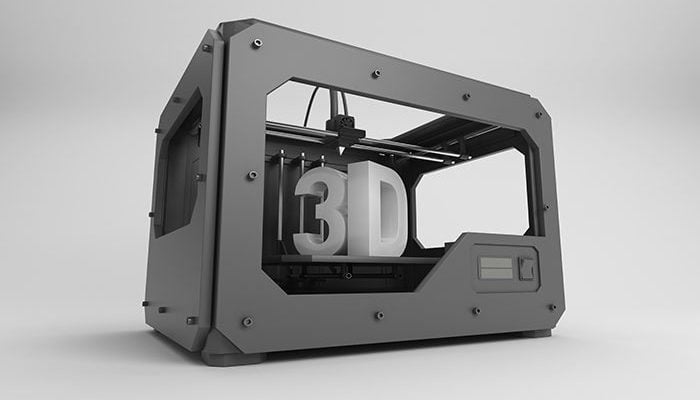3D PRINTING: IS IT A VIABLE FIELD SERVICE DELIVERY TOOL?
Dec 10, 2015 • Features • 3D printing • Aly Pinder • Future of FIeld Service
The hyperbole around 3D printing has died down but can it be a viable tool in field service? Aberdeen Group's Aly Pinder takes a closer look
The interaction between the end customer and the field service team is changing quite rapidly. In the not so distant past of just a few years ago, a technician was solely expected to show up on time. And that on time promise was somewhere between 8 hours and beyond.
This is no longer the environment we all live in. Customers demand answers fast, service even faster, and resolution on their schedules. The service organisation can no longer be reactive, it must have the resources, skills, and visibility to deliver when called upon. And the best service teams can be there before a problem is even detected.
This is all leading to the need for improvement in an often forgotten aspect of field service – spare parts. As noted in previous Aberdeen research, the #1 reason for a secondary truck roll is the technician doesn’t have the right part to resolve the issue.
There is need for improvement in an often forgotten aspect of field service – spare parts
If this isn’t keeping you up night, be sure that your management team is beginning to recognise the enormity of this problem and will be calling you soon to wake you up.
The answer to this problem may be in the form of 3D printing technology. Now, I know this may seem like the chatter of sci-fi movies. But even right now there are some very interesting use cases of 3D printing in our B2B world. And as seen in Aberdeen’s See the Future of Field Service in 3D report, this future is not far off even for the field.
Granted only about 11% of top performers have this technology in place (as compared to even less for peers at 4%), the interest in this technology is growing quite rapidly.
The business case is simple, the cost of technicians hoarding parts to make sure they have what they need is too high and service organisations can’t afford to disappoint customers with a second truck roll because a technician didn’t happen to overstock his/ her truck with that needed part.
For business that have the following profile, 3D printing might be the way to go in the near future:[unordered_list style="bullet"]
- Mission critical field service environment – What is the cost of not fixing the problem for the customer? If downtime can result in millions of dollars lost, it is important to ensure you have the parts needed to solve the problem when the technician is scheduled and sent out.
- Parts are a revenue stream – Some companies have found that spare parts, if priced accurately, can be a lucrative revenue opportunity for the business. If this is the case, it is imperative that the organisation keep technicians from hoarding parts as this is no longer solely a cost issue.
- The cost of inventory is out of hand – Is it worth it for your business to carry parts to fix issues that may not come up that often? Or maybe, revisions in equipment and parts happen frequently and it isn’t cost effective to carry parts which will be obsolete in just a couple of reporting quarters. 3D printing capabilities for the field team can help organisations cut down the cost of stocking low running parts and ensure the service organization can maintain its profitability goals.Place your list items here
3D printing as of today isn’t the right answer for everyone, as noted by the currently low adoption rates. But when it does make sense from a cost of deployment perspective, I think it can be a game changer in regard to the ability for the field team to always know they will have the right part to solve a customer need on the first time.





















 Field Service News is published by 1927 Media Ltd, an independent publisher whose sole focus is on the field service sector. As such our entire resources are focused on helping drive the field service sector forwards and aiming to best serve our industry through honest, incisive and innovative media coverage of the global field service sector.
Field Service News is published by 1927 Media Ltd, an independent publisher whose sole focus is on the field service sector. As such our entire resources are focused on helping drive the field service sector forwards and aiming to best serve our industry through honest, incisive and innovative media coverage of the global field service sector.
Leave a Reply